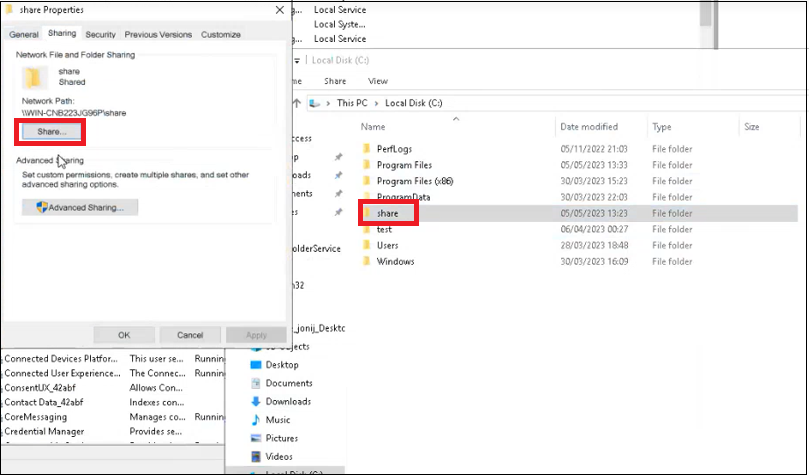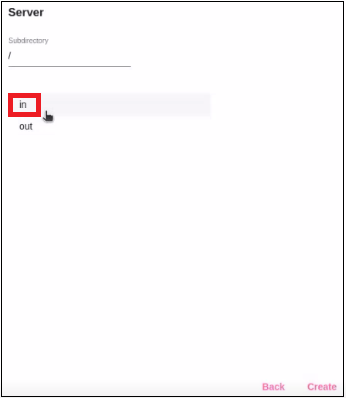Creating and Configuring Server Connectors (to File Repositories)
You can user Server connectors as source or destination and also as destinations of Safe, you can create and configure a server connector (i.e., set up a ‘Share’ on the network).
With this process, you can take files from a specified folder, scan and sanitize them (antivirus), and move them to another folder.
- First, connect to the server - for example, Windows File Server - and share the folder/library. You will need to set up a user that has access to the shared folder.

Within the Share folder are in and out folders. You can later build a policy where you’ll take the files from the “in” folder and move them to the “out” folder - once they’ve been scanned (antivirus).
- First, you’ll need to set up the “in” folder.
- Go to Connectors > Servers > + New Server.

- The out is already set up, so now you can set up the in.

- The options here can be set as follows:
- Name: You can call this in, since this is for the in server setup.
- Type: Here you can set the protocol that you want to use. Choose from CIFS, FTP, SFTP, or Local. In this example, we’ll choose CIFS.
- Address: This is the IP address you want to use. For example, 10.1.250.90.
- User: This should be the user that you set the sharing permissions for previously. Note that the user must have read/write permissions; otherwise the setup will not work.
- Password: The password cannot include special Linux characters.
- Share: Set as Share.
- Domain: This should be the domain of the user, so that the user has permissions. For example, cyber.lab.
- Leave the CIFS Version as Auto.
- Click Apply.
Note: If you click Apply and see a note saying Please verify the configuration, you will need to correct the configuration. If you don’t see this warning, it means that the configuration is ok, and you can proceed.
- Click Next.
- From the Server screen, select the In server and click Create.

- From the main Servers screen, you will see the in and out server connections that you created.
Updated 10 months ago
